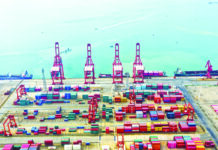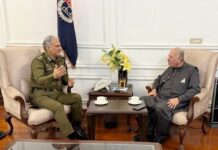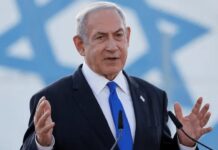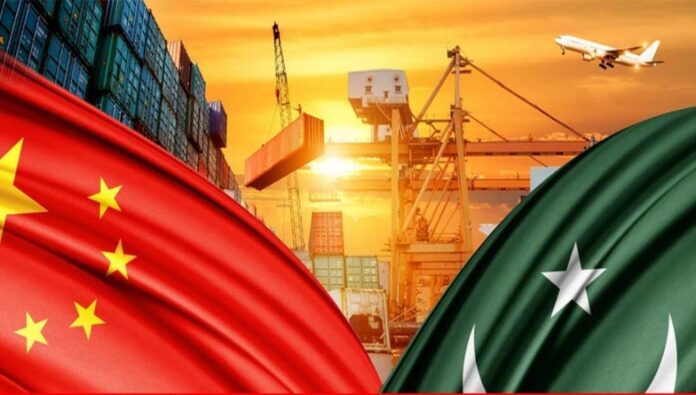The China-Pakistan Economic Corridor, popularly known by its abbreviation CPEC, was a long -term strategic programme being implemented by time-tested, all -weather, iron brother China in Pakistan. CPEC as such was designed to foster industrialization, trade facilitation, regional connectivity, integration within the global value chains, and socio-economic development.
The CPEC initiative also focused on poverty alleviation, agricultural modernization, operationalization of Gwadar Port, and promoting the blue economy. CPEC duly encouraged and promoted third-party participation. Recognizing the evolving global landscape, the scope of CPEC has been broadened to also include cooperation in Science and Information Technology, reinforcing its comprehensive development framework.
At the core of the CPED lay a strategic vision to connect Gwadar Port in south western Pakistan to China’s Xinjiang region through an extensive network of roads and railways. In its first phase, CPEC had prioritized Early Harvest Projects focusing heavily on energy and infrastructure. These early investments had duly addressed the critical deficiencies and established a solid foundation for accelerated economic growth and around 38 projects were completed in numerous sectors worth more than $25 billion. As a result of such accomplishments, Pakistan had noted a rise in industrial activity, improved logistics, and growing investor confidence and delivered a long-term stimulus to the national economy. Looking ahead, the emphasis of CPEC was quite rightly shifting toward inclusive socio-economic development and achieving targets of Sustainable Development Goals (SDGs) by focusing on five corridors i.e. Growth, Innovation, Green Development, Livelihood Improvement and Regional Openness which were aligned with the National Transformational Plan based on SEs Export, Equity, E-Pakistan, Energy and Environment objectives outlined in URAAN Pakistan.
PC-1 for Karakoram Highway’s Thakot-Raikot section, had also been approved by the Executive Committee of the National Economic Council (ECNEC). Pakistani members of the Joint Technical Committee for KKH had visited China in April 2025 for finalizing the financial and implementation terms, paving the way for construction commencement soon. The KKH realignment had been necessitated due to the construction of Dasu Dam. In the Energy sector, the successful completion of the 884 MW Suki Kinari Hydropower Project has added quite significant clean energy to the national grid, reinforcing Pakistan’s transition towards renewable and sustainable energy sources. Additionally, protocols had also been signed between China and Pakistan facilitating the export of key agricultural products, including boiled meat, cherries, and chilli, opening new markets and generating valuable foreign exchange earnings.
Meanwhile, Science and Technology cooperation was also being actively pursued, with an emphasis on technology transfer and upgradation, for supporting Pakistan’s sustainable development and enhancing productivity across various sectors. CPEC as such continued to evolve as a transformative platform for promoting and strengthening regional cooperation, economic resilience, and shared growth.
As regards performance, the CPEC continued to make quite significant strides during the just ended financial year 2024-25, making key achievements across various sectors. A standout development was the progress in the establishment of four priority Special Economic Zones (SEZs): Rashakai, Allama Iqbal Industrial City, Dhabeji, and Boston, supporting industrial growth, technology transfer and innovation in line with the SDGs, These SEZs were central to Pakistan’s industrialization agenda in the second phase of the CPEC.
Phase-1 of the Rashakai and Boston SEZs had been quite successfully completed with the registration of 21 and 17 enterprises respectively. Rashakai SEZ housed three Chinese enterprises, and focus was now on conducting more marketing campaigns/roadshows for attracting relocation of more foreign enterprises. Allama Iqbal Industrial City was also making leads in development work, and numerous industrial plots had already been allocatedto both domestic and international investors, and several enterprises were by now nearing their operational readiness. These developments were expected to drive job creation, enhance industrial output, and further strengthen Pakistan’s economic base.
The New Gwadar International Airport, a critical component of the CPEC initiative for enhancing regional connectivity, had since been completed, inaugurated by PM Shehbaz Sharif and was now fully operational, marking a key step toward transforming Gwadar Port into a major commercial hub. PC-1 for Karakoram Highway’s Thakot-Raikot section, had also been approved by the Executive Committee of the National Economic Council (ECNEC). Pakistani members of the Joint Technical Committee for KKH had visited China in April 2025 for finalizing the financial and implementation terms, paving the way for construction commencement soon. The KKH realignment had been necessitated due to the construction of Dasu Dam.
In the Energy sector, the successful completion of the 884 MW Suki Kinari Hydropower Project has added quite significant clean energy to the national grid, reinforcing Pakistan’s transition towards renewable and sustainable energy sources. Additionally, protocols had also been signed between China and Pakistan facilitating the export of key agricultural products, including boiled meat, cherries, and chilli, opening new markets and generating valuable foreign exchange earnings. It is also worth mentioning here that the Ministry of Planning, Development and Special Initiatives of Pakistan and National development and Reforms Commission of China had jointly held a high-level seminar in Beijing in December for aligning the five corridors of CPEC with URAAN Pakistan.






















